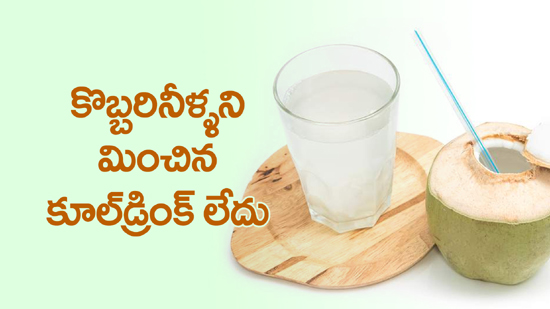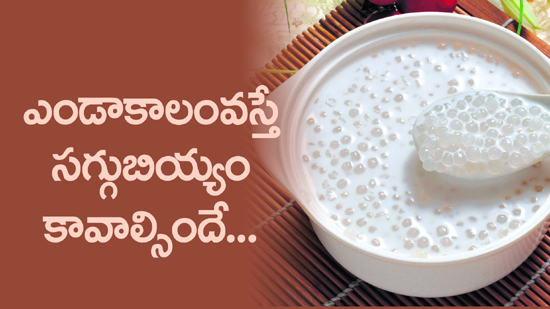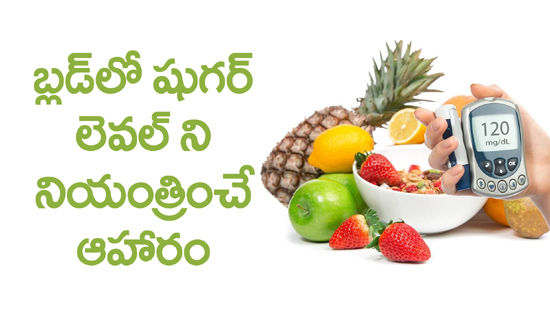Sunscreen a Boon or Bane?
Firstly how well do we know our sunscreen? Well sunscreen is a lotion or gel that protects us from the harmful ultraviolet radiation, i.e., UVA and UVB rays. It is advisable to apply sunscreen at least 30minutes before exposing our skin to harsh sun radiation. And a reapplication is needed once we sweat out or after we wash or come in contact with water. Sunscreens are graded by SPF - Sun Protection Factor, so if your sunscreen reads SPF 20, then 1/20 of the solar radiation reaches our skin. Pros of Sunscreen: The obvious benefits are protection from sunburns and sun sensitivity in fair skinned individuals. Recent researches have validated it use in delaying premature ageing such as, wrinkles and sagging of skin. Also reduces the risk of acquiring skin cancers like melanoma and squamous cell carcinoma Cons of Sunscreen: The ingredients of sunscreen may trigger some kind of allergic reaction in some people. It may worsen acne and may also present are pus follicles as sun-block tend to block the skin pores. May also predispose us to breast cancers. Minimal degrees of Vitamin Deficiency had been reported. Lately, there has been lot of fuss over the use of high SPF sunblock. It is wise to use sunscreens suitable to the skin type, and SPF of 30 - 40 is the best range, because none of the sunscreens can provide 100% protection from the solar radiation, so it is best to re-apply often than use of high SPF. Take Care!! Stay uncovers or under sunscreen!! - Koya Satyasri
read moreనడుంనొప్పితో డిప్రెషన్ తప్పదా!
నడుంనొప్పి- పిలవని అతిథిలాగా పలకరించే సమస్య! ఎందుక వచ్చిందో తెలుసుకునేలోపే నిలబడనీయనంత బాధని మిగులుస్తుంది. ఇక వచ్చిన తరువాత ఎలా వదిలించుకోవాలో తెలియక తలలు బాదుకోవాల్సి వస్తుంది. శరీరంలో ఏదో ఒక బాధ ఉన్నప్పుడు మనసు కూడా చికాకుగా ఉండటం సహజమే! కానీ డిప్రెషన్, చిత్తభ్రాంతిలాంటి తీవ్రమైన మానసిక సమస్యలకీ శారీరిక సమస్యలకీ మధ్య సంబంధాన్ని ఊహించడం కష్టం. నడుము నొప్పి ఉన్నవారిలో ఇలాంటి అదనపు సమస్యలు కూడా ఏర్పడతాయని హెచ్చరిస్తున్నారు పరిశోధకులు. పేదదేశాలలోనే ఎక్కువ: ఒక దేశం ధనిక దేశమా, పేద దేశమా అన్న అంశం మీద అక్కడి ప్రజలలో నడుము నొప్పి ఆధారపడి ఉంటుందంటే ఆశ్చర్యం కలుగక మానదు. కానీ ఇది నిజం! దనిక దేశాలతో పోల్చుకుంటే పేద, అభివృద్ధి చెందుతున్న దేశాలలో నడుం నొప్పితో బాధపడేవారి సంఖ్య చాలా ఎక్కువగా ఉన్న విషయాన్ని ‘ప్రపంచ ఆరోగ్య సంస్థ’ ఏనాదో ధృవీకరించింది. వెనుకబడిన దేశాలలో సగటున మూడోవంతు మంది జనం నడుము నొప్పితో బాధపడుతున్నట్లు తేల్చింది. వ్యవసాయం, భవన నిర్మాణం వంటి పనులలో పాల్గొనేవారి సంఖ్య ఎక్కువగా ఉండటం ఇందుకు ముఖ్య కారణం అయితే... నడుము నొప్పి వచ్చినా కూడా దానికి చికిత్స తీసుకునే ఆర్థిక స్తోమత లేక, బతుకుబండిని భారంగా లాగడం మరో కారణం. అందుకే బంగ్లాదేశ్, బ్రెజిల్ వంటి పేద దేశాలలో 50 శాతానికి పైగా జనం నడుము నొప్పితో బాధపడుతున్నట్లు సదరు గణాంకాలతో వెల్లడయ్యింది. మానసిక సమస్యలు అదనం: ఇవే గణాంకాలను ఆధారం చేసుకుని లండన్కు చెందిన కొందరు పరిశోధకులు మరో విషయాన్ని కనుగొనే ప్రయత్నం చేశారు. ఇతరులతో పోలిస్తే నడుము నొప్పి ఉన్నవారిలో ఏవన్నా మానసిక సమస్యలు కూడా ఉన్నాయేమో అని పరిశీలించారు. నిజంగానే వారిలో ఉద్వేగం (anxiety), క్రుంగుబాటు (depression), భ్రాంతి (psychosis), ఒత్తిడి (stress), నిద్రలేమి (sleep deprivation) అనే అయిదు రకాల మానసిక సమస్యలలో ఏదో ఒకటి ఉన్నట్లు తేల్చారు. ఇతరులతో పోలిస్తే నడుము నొప్పి ఉన్నవారిలో ఈ లక్షణాలు రెండు రెట్లు అధికంగా ఉన్నట్లు తేలింది. వీరిలో డిప్రెషన్ ఏర్పడే ప్రమాదం అయితే ఏకంగా మూడు రెట్లు అధికంగా ఉన్నట్లు తేలింది. కారణం తేలలేదు కానీ... నడుము నొప్పికీ మానసిక సమస్యలకీ మధ్య కార్యకారణ సంబంధం ఏమిటో పరిశోధకులు చెప్పలేకపోతున్నారు. అయితే ఈ గణాంకాలన్నీ కూడా పేద, అభివృద్ధి చెందుతున్న దేశప్రజలకు సంబంధించినవి కాబట్టి... వారి అర్థిక స్థితి కారణంగానే అటు నడుము నొప్పీ, ఇటు మానసిక సమస్యలు కూడా జంటగా కనిపిస్తున్నాయని కొందరి విశ్లేషణ. అందుకే నడుము నొప్పి రాగానే అదేదో సాధారణమైన సమస్యగా భావించి అశ్రద్ధ చేయకుండా తగిన జాగ్రత్తలు తీసుకోవడం మంచిదని హెచ్చరిస్తున్నారు. తగినంత నిద్ర, అవసరమైనంత వ్యాయామం, వ్యసనాలకు దూరంగా ఉండటం, శరీర భంగిమను మార్చుకోవడం, వైద్యులని సంప్రదించడం... వంటి చిన్నపాటి చర్యలతో నడుమునొప్పిని అదుపులో ఉంచుకోవచ్చునని సూచిస్తున్నారు. -నిర్జర.
read moreఅవసరం లేకపోయినా ICU
ఒకప్పుడు ICU అన్న పేరు పెద్దగా వినిపించేది కాదు. కానీ ఆసుపత్రులు పెరిగిపోవడం, వైద్యం పట్ల ప్రజల్లో అవగాహన ఒక స్థాయిని దాటిపోవడంతో... ఇప్పుడు ప్రతివారూ ICU గురించే మాట్లాడుతున్నారు. రోగి పరిస్థితి కాస్తంత విషమంగా కనిపించగానే ICUనే శరణ్యం అనుకుంటున్నారు. కానీ ఇదేమంత మంచి పద్ధతి కాదని సూచిస్తున్నారు కొందరు పరిశోధకులు. ఒక రోగి పరిస్థితి చేయి దాటిపోతుంది అనుకున్నప్పుడు అతనికి కృత్రిమ శ్వాసని అందించే వెంటిలేటర్లు, రక్తపోటుని పరీక్షించే మానిటర్లు, గుండె ఆగిపోకుండా చూసే ఎక్స్టర్నల్ పేస్మేకర్ల వంటి పరికరాలన్నీ అందుబాటులో ఉండే ICUలో అతడిని ఉంచుతారు. ఇన్ని అధునాతన పరికరాలకు తోడుగా నిరంతరం వైద్యుల పర్యవేక్షణ కూడా ఉండాలి కాబట్టి ICU ఖర్చులు భారీగానే ఉంటాయి. ప్రాంతాన్ని బట్టి, ఆసుపత్రిని బట్టి ఐదువేల రూపాయల నుంచి 50 వేల రూపాయల వరకూ ఈ ఖర్చులుంటాయి. అయితే నిజంగా ICUలో చేరేవారందరినీ, అవసరం మేరకే అందులో చేరుస్తున్నారా అనే ఆలోచన వచ్చింది అమెరికాకు చెందిన కొందరు పరిశోధకులకు. దాంతో వారు 2015-16 సంవత్సరాల మధ్య ICUలో చేరిన 808 మంది రోగుల రికార్డులను పరిశీలించారు. ఈ పరిశీలన తరువాత తేలిన అంశాలు ఏమిటంటే... - వీరిలో 23.4 శాతం రోగులని నిరంతరం పరిశీలించే అవసరం ఉంది కానీ, మరీ ICUలో ఉంచి గమనించుకోవాల్సినంత తీవ్రత లేదు. - 20.9 శాతం మంది మొండి రోగాలతో బాధపడుతూ ఉండటం వల్ల, వారిని ఎంతకాలం ICUలో ఉంచినా కూడా ఉపయోగం లేదు. వారిని ICUలో ఉంచినా, విడిగా ఉంచినా ఒకటే! - 8 శాతం మంది రోగులు తమ జీవితపు ఆఖరి క్షణాలలో ఉన్నారని తేలింది. వీరిని కూడా ICUలో ఉంచడం వల్ల ఎలాంటి అదనపు ప్రయోజనమూ లేదు. మొత్తం మీద ఇలా దాదాపు 50 శాతం మందిని అవసరం లేకపోయినా కూడా ICUలలో ఉంచుతున్నారని తేల్చారు పరిశోధకులు. దీని వలన రోగుల తాలూకు విలువైన డబ్బులు వృధా అవుతున్నాయనీ, ఆసుపత్రి తాలూకు విలువైన పరికరాలనీ అవసరం లేని చోట వినియోగించాల్సి వస్తోందనీ వాపోయారు. ఒకవేళ రోగులను ICUలలో ఉంచాల్సి వచ్చినా కూడా 65 శాతం రోజులు అదనంగా ఉంటున్నారని లెక్కకట్టారు. ఇంతకీ పరిశోధకులు తేల్చిందేమిటంటే... ICU (ఇంటెన్సివ్ కేర్) అనే స్థితి రోగికి ఉపయోగమా లేదా అన్నది వైద్యులు ఒకటికి రెండుసార్లు ఆలోచించి నిర్ణయం తీసుకోవాలి. ICU వెలుపలే చిన్నాచితకా మానిటరింగ్ వ్యవస్థలు ఏర్పాటు చేసుకుని రోగిని గమనించుకునే సదుపాయాలను ఏర్పాటు చేసుకోవాలి. తప్పనిసరి పరిస్థితుల్లోనే రోగిని ICUలో ఉంచాలి. లేకపోతే అటు రోగికీ ఇటు ఆసుపత్రికీ కూడా ICUలు భారంగా మారిపోయే ప్రమాదం ఉంది. మరి వాణిజ్య విలువల ఆధారంగా నడుస్తున్న కొన్ని ఆసుపత్రులు ఈ జాగ్రత్తను ఎంతమేరకు పాటిస్తాయి అంటే జవాబు చెప్పడం కష్టమే! - నిర్జర.
read moreతెలుగువారి దివ్యౌషధం నేలవేము..
సారాసారము లెఱుగని బేరజులకు బుద్ధిజెప్పబెద్దలవశమా? నీరెంత పోసి పెంచినగూరగునా నేలవేము?గువ్వలచెన్నా! అని గువ్వలచెన్న శతకంలో ఓ పద్యం ఉంది. ఎంత నీరు పోసినా పెంచినా కూడా నేలవేములో చేదు తగ్గడం ఎలా అసాధ్యమో.... మంచీచెడూ విచక్షణ ఎరుగని ధూర్తులకు బుద్ధి చెప్పాలనుకోవడం అంతే నిరుపయోగం అని ఈ పద్యంలోని అర్థం. దాదాపు మూడు వందల సంవత్సరాల క్రితం రాసిన ఈ పద్యంలో నేలవేము అనే మొక్క గురించిన ప్రస్తావన కనిపిస్తుంది. ఇంతకీ ఏమిటా నేలవేము అని తరచిచూస్తే కళ్లు చెదిరే వాస్తవాలు ఎన్నో వినిపిస్తాయి. కటిక నేల మీదైనా : నేలవేము ఆసియాకే ప్రత్యేకమైన ఓ చిన్న మొక్క. మొదట్లో ఇది దక్షిణభారతంలోనే కనిపించేదట. దీని ఔషధగుణాలు తెలిసిన తరువాత ప్రపంచమంతటా దీనిని పెంచడం మొదలుపెట్టారు. ఎలాంటి నేలలో అయినా, ఎలాంటి కాలంలో అయినా పెరిగే సత్తా ఉండటంతో దీని పెంచేందుకు ఏమంత శ్రద్ధ వహించాల్సిన పనిలేదు. పైగా వేయి అడుగుల ఎత్తైన పర్వతాల మీద కూడా నేలవేము సులభంగా ఎదిగేస్తుందని తేలింది. కటిక చేదు వేము అంటే వేప. నేల మీద పెరిగే చిన్నపాటి మొక్కలలో వేపతో సమానమైన చేదు కలిగి ఉంటుంది కాబట్టి, ఈ మొక్కకి నేలవేము అన్న పేరు వచ్చింది. దీనికి ఉన్న విపరీతమైన చేదుగుణం వల్ల సంస్కృతంలో దీనిని మహాతిక్త అని కూడా పిలుస్తారు. ఆయుర్వేదంలో కాల్మేఘ్ పేరుతో దీనిని విస్తృతంగా వాడతారు. తిక్తక కషాయం, తిక్తఘృతం వంటి మందులెన్నింటినో నేలవేముతో తయారుచేస్తారు. దేశాన్నే కాపాడిందా! నేలవేములో ఉండే కటిక చేదే మన ఆరోగ్యానికి అమృతంలా పనిచేస్తుందంటారు వైద్యులు. ఈ విషయాన్ని ఎరిగినవారు కనుకే భారతీయులు వందల ఏళ్లుగా దీనిని గృహవైద్యంలో భాగంగా వాడుతూ వచ్చారు. దీని ఆకులు, వేళ్లని ఎండబెట్టుకుని చూర్ణం చేసుకుని ప్రతి ఇంట్లోనూ ఉంచుకునేవారు. జలుబు చేసినా, జ్వరం వచ్చినా కూడా దీనినే వాడేవారు. అంతదాకా ఎందుకు! 1918 ప్రాంతంలో వచ్చిన ఫ్లూ జ్వరాలు ప్రపంచాన్నంతా చుట్టుముట్టాయి. మన దేశంలో కూడా కోటిమందికి పైగా ఈ జ్వరం బారిన పడి ప్రాణాలు కోల్పోయారు. కానీ ఆ సమయంలో గ్రామగ్రామానా కాల్మేఘ్ ఔషధాన్ని వాడటం వల్ల ఫ్లూ ఉపద్రవం ఉపశమించిందంటారు. సర్వవ్యాధినివారిణి : - నేలవేము యాంటీ బ్యాక్టీరియల్గా పనిచేయడం వల్ల క్షయ, నిమోనియా వంటి వ్యాధులలో ఉపశమనాన్నిస్తుంది. - ఇందులోని యాంటీ ఫంగల్ గుణాల వల్ల చర్వవ్యాధులలో అద్భుతంగా పనిచేస్తుంది. - యాంటీ వైరల్ లక్షణాల కారణంగా హెర్పిస్ అనే మొండి సుఖవ్యాధి మీద సైతం ప్రభావాన్ని చూపుతుంది. - జలుబు వంటి కఫ సంబంధ వ్యాధులలో నేలవేము అద్భుతంగా పనిచేస్తుందని పరిశోధనలలో కూడా రుజువైంది. - నేలవేము చూర్ణం, కాలేయం పనితీరుని మెరుగుపరిచి కామెర్లని అదుపులో ఉంచుతుందట. - మలేరియా, చికెన్గున్యా వంటి మొండి జ్వరాలలో సైతం నేలవేము ప్రభావం చూపుతుందని సంప్రదాయ వైద్యులు చెబుతున్నారు. - గుండె ధమనులు గట్టిపడిపోయే atherosclerosis అనే స్థితిలో నేలవేముని వాడితే ఫలితం దక్కవచ్చు. - జీర్ణ సంబంధమైన చాలా వ్యాధులలో నేలవేము అద్భుతాలు చేస్తుందన్నది వైద్యుల మాట. - నేలవేము పెరిగే చోట పాములు, దోమల వంటి విషజీవులు దరిచేరవని అంటారు. ఇవీ నేలవేముకి సంబంధించిన కొన్ని ఉపయోగాలు. ఇక నేలవేములో ఉండే విపరీతమైన చేదు వల్ల మధుమేహంలో ఇది దివ్యౌషధంగా పనిచేస్తుందనడంలో ఎవరికీ ఎలాంటి సందేహమూ లేదు. అయితే గర్భిణీ స్త్రీలు నేలవేముని వాడటం వల్ల శిశువుకి ప్రమాదం జరిగే అవకాశం ఉందా లేదా అన్న విషయమై ఇంకా పరిశోధనలు జరుగుతున్నాయి. నేలవేముని వాడటం వల్ల ఎయిడ్స్, క్యాన్సర్ వంటి రోగాలు సైతం అదుపులో ఉంటాయని చెబుతున్నారు కానీ... ఈ నమ్మకంలోని నిజానిజాలు ఇంకా రుజువు కాలేదు. ఇదీ నేలవేముని గురించి ఓ స్థూల పరిచయం. నేలవేముని వాడటం వల్ల మనం సంపూర్ణ ఆరోగ్యవంతులుగా మారిపోతారని కాదు. కానీ ఇలాంటి ఔషధి ఒకటి ఉండేదని తెలుసుకోవడం వల్ల మన సంప్రదాయ వైద్య విజ్ఞానం మరీ తీసిపారేసేదేమీ కాదని తేలుతుంది. ఆసక్తి ఉంటే మనం కూడా వాటిలో కొన్ని ఆచరణాత్మక పద్ధతులను పాటించే అవకాశం ఉంది. అలా సులువుగా, సమర్ధవంతంగా వాడుకోగల ఔషధులలో నేలవేము ఒకటి. - నిర్జర.
read moreఆరోగ్యానికి రేడు నేరేడు
ఆయుర్వేదం ప్రకారం మన ఆహారమే గొప్ప ఔషధం. ఆ ఆహారంలోనే మన శరీరానికి అవసరమైన పదార్థాలను చేర్చుకోవడం ఆరోగ్యకరమైన జీవనానికి మార్గం. అందుకే ఏ కాలంలో దొరికే పండ్లనైనా విస్మరించకుండా తినమని సూచిస్తూ ఉంటారు. ఎందుకంటే ఒకో రుతువులో దొరికే పండుకీ ఒకో ప్రాధాన్యత ఉంటుంది. రుతువు మారితే ఆ పండు చేజారిపోవచ్చు. అలా వర్షరుతువులో ధారాళంగా లభించే ఫలం నేరేడు. - నేరేడుకి రకరకాల పేర్లే ఉన్నాయి. అసలు ఆ పేర్లలో ఒకటైన ‘జంబూ’ అన్నదాని మీదుగానే మన ప్రాంతానికి ‘జంబూద్వీపం’ అన్న పేరు వచ్చిందంటారు. ఎందుకంటే ఒకప్పుడు నేరేడు కేవలం దక్షిణాసియాకు మాత్రమే పరిమితమైన వృక్షం. ఆ తరువాత కాలంలో మన దేశం నుంచి నేరేడు విత్తనాలను ఐరోపాలకు తీసుకువెళ్లారు. ఇక అమెరికావాసులకైతే 19వ శతాబ్దం వరకూ ఈ చెట్టు పరిచయమే లేదు. - నేరేడు ఫలాలను, దళాలను పూజలో వాడటం తెలిసిందే! అయితే ఔషధరీత్యా కూడా నేరేడు ప్రాశస్త్యం నానాటికీ పెరిగిపోతోంది. ఈపాటికే నేరేడుని హోమియోపతి, ఆయుర్వేదంలో విస్తృతంగా వాడుతూ వస్తున్నారు. కానీ ఇప్పుడు నేరేడు డయాబెటీస్, రక్తపోటు వంటి సమస్యలలో అత్యంత ప్రభావవంతంగా పనిచేస్తుందని తెలియడంతో సాధారణ ప్రజలు కూడా వీటిని ఇష్టపడుతున్నారు. - చాలామంది కేవలం నేరేడు పండ్లు తింటే మధుమేహం తగ్గిపోతుందని భావిస్తారు. నేరేడు పండుకంటే కూడా అందులోని గింజలను ఎండపెట్టుకుని చేసుకునే పొడితో, మధుమేహం నుంచి మరింత ఉపశమనం లభిస్తుంది. శరీరంలో ఇన్సులిన్ ఉత్పత్తిని పెంచి, చక్కెర నిల్వలని అదుపు చేసే సామర్థ్యం ఈ నేరేడు గింజలకు ఉందని సంప్రదాయ వైద్యుల నమ్మకం. ‘సైజీజియం’ అనే శాస్త్రీయ నామంతో కూడిన నేరేడు మందును హోమియోపతిలో మధుమేహాన్ని నివారించేందుకు తప్పక వాడతారు. ఈ మందుని తరచూ తీసుకుంటే చక్కెర నిల్వలు అదుపులోకి రావడమే కాకుండా, మూత్రంలో సైతం చక్కెర కనిపించకుండా పోతుందని భావిస్తారు. - మిగతా పండ్లలోకంటే నేరేడులో యాంటీఆక్సిడెంట్లు పుష్కలంగా లభిస్తాయంటున్నారు శాస్త్రవేత్తలు. Delphinidin, cyanidin, malvidin... వంటి బోలెడు యాంటీఆక్సిడెంట్లు నేరేడులో ఉన్నాయని చెబుతున్నారు. దీనివల్ల గుండె ఆరోగ్యం, మెదడు పనితీరు మెరుగుపడతాయట. పైగా క్యాన్సర్ వంటి జటిలమైన అనారోగ్యాలను సైతం ఎదుర్కొనే సత్తా ఈ యాంటీ ఆక్సిడెంట్లకు ఉందని పరిశోధనలు రుజువుచేస్తున్నాయి. - నేరేడులో ఉండే పోషకాలు అసాధారణం! ముఖ్యంగా విటమిన్ సి, ఐరన్లు ఈ పండులో పుష్కలంగా లభిస్తాయి. మన శరీరంలో రోగనిరోధక శక్తిని పెంపొందించేందుకూ ఈ రెండూ కూడా దోహదపడతాయి. మరీ ముఖ్యంగా వర్షరుతువుతో పాటుగా వచ్చే దగ్గు, జలుబు, జ్వరాల బారిన పడకుండా కాచుకుంటాయి. - జీర్ణవ్యవస్థను సరిదిద్దేందుకు నేరేడు అమోఘంగా పనిచేస్తుందంటారు పెద్దలు. విరేచనాలతో బాధపడేవారికీ, కాలేయం పనితీరుని మెరుగుపరచడానికీ నేరేడు దోహదపడుతుంది. చెప్పుకొంటూ పోతే నేరేడు సుగుణాలకి లెక్కే లేదు. అందుకేనేమో శ్రీరాముడు సైతం, వనవాసంలో ఉన్నప్పుడు ఈ నేరేడు పండ్లను సేవించాడని ఇతిహాసాలు పేర్కొంటున్నాయి. మరి మనమో! - నిర్జర.
read moreసరైన పాదరక్షలు లేకపోతే... జీవితం అంతే!
మనం బట్టల ఎన్నుకోవడంలో చూపే శ్రద్ధ పాదరక్షల మీద ఉంచము. ఒకవేళ చెప్పులో, షూలో కొనుక్కోవడానికి వెళ్లినా... అవి చూడటానికి బాగున్నాయా, ఎక్కువకాలం మన్నుతాయా, తక్కువ ధరకి వస్తున్నాయా అని ఆలోచిస్తామే కానీ నడవడానికి సౌకర్యంగా ఉన్నాయా లేదా అని పట్టించుకోం. ఇలాంటి అశ్రద్ధే మన కొంప ముంచుతుందని చెబుతున్నారు నిపుణులు... వయసు పెరిగేకొద్దీ జాగ్రత్త! కుర్రతనంలో ఎలాంటి చెప్పులు ధరించినా చెల్లిపోతుంది. కానీ వయసు మళ్లేకొద్దీ అలా కాదు! పాదం ఆకృతి మారిపోతుంది. వాటి ఒడ్డూపొడవులో మార్పులు వస్తాయి. నొప్పిని తట్టుకునే శక్తిలో తేడా ఏర్పడుతుంది. పాదం అడుగుభాగంలో ఉండే కొవ్వు, కండరాలలో కూడా పరివర్తన ఉంటుంది. కొన్ని సందర్భాలలో అయితే రెండు పాదాలకీ వేర్వేరు సైజ్ ఉన్న చెప్పులు ధరించాల్సినంతగా మార్పులు జరుగుతాయి. వీటికి తోడు ఊబకాయం, డయాబెటిస్, కీళ్లనొప్పులు వంటి సమస్యలు కూడా మనం నడిచే తీరు మీదా, పాదాల ఆరోగ్యం మీదా ప్రభావం చూపుతాయి. ఇంత జరుగుతున్నా... పాదరక్షల గురించి మరింత శ్రద్ధ వహించాల్సిన వయసులో కూడా మనం చాలా అశ్రద్ధగా వ్యవహరిస్తాం అంటున్నారు నిపుణులు. దీనికోసం లోపెజ్ (Lopez) అనే పరిశోధకుడు ఓ రెండు సర్వేలను నిర్వహించాడు. మొదటి సర్వేలో 80 ఏళ్లు పైబడినవారు పాదరక్షల విషయంలో ఎలాంటి జాగ్రత్తలు తీసుకుంటున్నారో గమనించారు. దాదాపు 83 శాతం మంది, తమ పాదాలకంటే పెద్దవో చిన్నవో (different size) పాదరక్షలు ధరిస్తున్నట్లు తేలింది. లోపెజ్ నిర్వహించిన రెండో సర్వేలోనూ దారుణమైన వాస్తవాలే వెలుగుచూశాయి. తగిన పాదరక్షలు ధరించనివారు తమకి తెలియకుండా చాలా ఆరోగ్య సమస్యలను ఎదుర్కొంటున్నట్లు తేలింది. పాదాలలో విపరీతమైన నొప్పి, ఇన్ఫెక్షన్లు, ఎక్కువ దూరం నడవలేకపోవడం, నడిచేటప్పుడు ఆయాసం వంటి సమస్యల దగ్గర నుంచి అదుపుతప్పి పడిపోవడం వరకూ... జీవితాన్ని తలకిందులు చేసే ఎన్నో సమస్యలు అపసవ్యమైన పాదరక్షలతో ముడిపడి ఉన్నాయని గ్రహించారు. దీని వల్ల ఏకంగా వారి జీవితమే ప్రభావితం అవుతోందని తేల్చారు. జాగ్రత్తపడాల్సిందే! సరైన పాదరక్షలు ధరించకపోవడం వల్ల ఇన్నేసి అనర్థాలు ఉన్నాయని తెలిశాక ఇక జాగ్రత్తపడకపోతే ఎలా! అందుకనే ఏవన్నా ఆరోగ్య సమస్యలు ఉన్నవారు, పాదరక్షల గురించి ఓసారి తమ వైద్యునితో మాట్లాడితీరాలి. పాదానికి మెత్తగా ఉండేలా, నడిచేటప్పుడు పట్టుని ఇచ్చేలా, కీళ్ల మీద ఒత్తిడిని కలిగించకుండా ఉండే పాదరక్షలను ఎన్నుకోమని చెబుతున్నారు. అలాగే పాదం ఆకారానికి తగినట్లుగా సర్దుబాటు చేసుకునే స్ట్రాప్స్ ఉండే పాదరక్షలని ధరించమని సూచిస్తున్నారు. - నిర్జర.
read moreవెన్నునొప్పికి మాత్రలు పనిచేయవు!
నొప్పి లేకుండా బతుకు బండి ముందుకు నడవదు. ఆ నొప్పిని పంటిబిగువున భరిస్తూ ఏదో ఒక మాత్ర వేసుకుంటూ ముందుకు సాగాల్సిందే. కానీ అన్నివేళలలా నొప్పి మాత్రలు పనిచేయవు సరికదా... వాటి వల్ల లేనిపోని సమస్యలు కూడా తలెత్తుతాయని హెచ్చరిస్తున్నారు. అందుకు వెన్నునొప్పిని మినహాయింపుగా చూపిస్తున్నారు. వెన్నెలో ఉండే డిస్క్ అరిగిపోవడం దగ్గర నుంచీ కండరం వాపు వరకు వెన్నునొప్పికి కారణం ఏదైనా కావచ్చు. ఇలా నొప్పి చేసినప్పుడు ఆస్పిరిన్, బ్రూఫిన్ వంటి నొప్పి మందులు వాడుతూ ఉంటాము. ఈ తరహా మందులను Nonsteroidal anti-inflammatory drugs (NSAID) అంటారు. ఇవి వాపుతో పాటుగా నొప్పిని కూడా తగ్గిస్తాయన్నమాట. ఆస్ట్రేలియాకు చెందిన కొందరు పరిశోధకులు వెన్నునొప్పిలో NSAID ఫలితం ఏమేరకు ఉంటుందో గమనించే ప్రయత్నం చేశారు. ఇందుకోసం వాళ్లు 6000 మంది రోగులని పరిశీలించారు. ప్రతి ఆరుగురు రోగులలో ఒక్కరికి మాత్రమే నొప్పి మాత్రలు పనిచేస్తున్నట్లు తేలింది. మిగతావారిలో ఈ మాత్రలు ప్రభావం చూపకపోగా జీర్ణసంబంధమైన సమస్యలు మొదలవడాన్ని గమనించారు. అల్సర్లు ఏర్పడటం, పేగులలో రక్తస్రావం జరగడం లాంటి తీవ్రమైన ఇబ్బందులు తలెత్తాయట. ఇక నొప్పి మాత్రలతో లివర్, కిడ్నీ వంటి అవయవాలు దెబ్బతినే అవకాశం ఎలాగూ ఉంది. ఇకమీదట వెన్నునొప్పి వచ్చినప్పుడు నొప్పి మాత్రల మీద ఆశలు పెట్టుకోవద్దని సూచిస్తున్నారు. దీనికి బదులుగా కాపడం పెట్టుకోవడం, విశ్రాంతి తీసుకోవడం, చిన్నపాటి వ్యాయామాలు చేయడం, ఫిజియోథెరపీ చేయించుకోవడం వంటి చికిత్సలను అనుసరించి చూడమంటున్నారు. - నిర్జర.
read moreకొవ్వు కరగడానికి చిన్న చిట్కా
ఒళ్లు తగ్గాలనీ, ఒంట్లోని కొవ్వు కరగాలని ఎవరికి మాత్రం ఆశగా ఉండదు. చేసే పనికంటే తీసుకునే ఆహారం ఎక్కువగా ఉన్న ఈ రోజులలో ఊబకాయం మన జోలికి రాకూడదని ఎవరికి మాత్రం తోచదు. ఓ పరిశోధనా ఫలితాలు అలాంటివారికి శుభవార్తలా తోచడం ఖాయం. ఆహారమే ధ్యాస సాధారణంగా మనం ఆహారం తీసుకునే సమయం ఉదయం లేచిన దగ్గర్నుంచీ రాత్రి పడుకునేలోపు ఎప్పుడైనా ఉండవచ్చు. అంటే సుమారుగా ఉదయం ఆరు గంటల నుంచి రాత్రి పన్నెండు గంటల వరకు ఎప్పుడైనా ఆహారం తీసుకుంటూ ఉంటాం. దీనికి విరుద్ధంగా ఉదయం ఎనిమిది గంటల నుంచి మధ్యాహ్నం రెండు గంటలలోపు ఆహారం తీసుకుంటే ఏమన్నా ఉపయోగం ఉందా లేదా అన్న విషయాన్ని పరిశీలించే ప్రయత్నం చేశారు అలబామా యూనివర్శిటీకి చెందిన పరిశోధకులు. ఇలా ఆహారాన్ని కాస్త ముందుగానే తీసుకునే విధానాన్ని early time-restricted feeding (eTRF) అంటారు. అన్నీ సర్దుకున్నాయి eTRF వల్ల ఉపయోగం ఉందో లేదో తెలుసుకునేందుకు పరిశోధకులు, ఊబకాయంతో బాధపడుతున్న ఓ 11 మందిని ఎన్నుకున్నారు. వీరికి ఓ నాలుగు రోజులపాటు ఉదయం ఎనిమిది నుంచి రాత్రి ఎనిమిది లోపు ఆహారాన్ని అందించారు. మరో నాలుగురోజులు ఉదయం ఎనిమిది నుంచి మధ్యాహ్నం రెండుగంటల లోపే ఆహారాన్ని తీసుకునేట్లు నిర్దేశించారు. ఈ రెండు సందర్భాలలోనూ ఒకే మోతాదు ఆహారాన్ని తీసుకున్నా కూడా, అది వారి శరీరం మీద చూపే ప్రభావంలో స్పష్టమైన మార్పులు ఉన్నట్లు గమనించారు. మధ్యాహ్నం రెండింటి లోపే ఆహారాన్ని తీసుకున్నవారిలో జీవక్రియలు చాలా చురుగ్గా ఉండటాన్ని గమనించారు. వీరిలో కొవ్వు కూడా చాలా వేగంగా కరుగుతున్నాయని తేలింది. ఇదీ కారణం ప్రతి మనషిలోనూ ఒక జీవగడియారం పనిచేస్తుందనీ, అది ప్రకృతికి అనుగుణంగా నడుస్తుందనీ తెలిసిన విషయమే! ఈ జీవగడియారం ప్రకారం ఉదయం వేళల్లో మనలో అనేక జీవక్రియలు (metabolism) జరుగుతుంటాయి. అదే సమయంలో మన శరీరానికి ఆహారం అందటం వల్ల దానిని వీలైనంత సమర్థంగా జీర్ణం చేసుకునే పరిస్థితి ఉంటుంది. ఎలుకల మీద ఇది వరకే చేసిన ప్రయోగాలలో కూడా eTRf వల్ల వాటిలో కొవ్వు వేగంగా కరగడమే కాకుండా ఆరోగ్య సమస్యలు కూడా దరిచేరలేదని వెల్లడయ్యింది. eTRF తరహా ఆహార పద్ధతికి సంబంధించి ఇవి ప్రాథమిక పరిశోధనలు మాత్రమే. ఎలాంటివారు ఎంతకాలం ఈ పద్ధతిని ఆచరించవచ్చు అన్న విషయమై ఇంకా స్పష్టత రాలేదు. కాకపోతే భారతీయ వైద్య విధానంలో మాత్రం ఈ తరహా ప్రయోగాలు కొత్తేమీ కాదు. ఎందుకంటే ప్రకృతి వైద్యచికిత్స ప్రకారం ఉపవాసం మొదలుపెట్టిన రోజు నుంచి మర్నాడు ఉదయం వరకు కూడా ఏమీ తీసుకోకపోవడమే సత్ఫలితాన్నిచ్చే ఉపవాసం. ఇలాంటి ఉపవాసాల వల్ల ఎంత ప్రయోజనం ఏర్పడుతుందో eTRF పరిశోధనతో మరోసారి రుజువైపోయింది. - నిర్జర.
read moreవేసవిలో నాలుకను తడిగా వుంచండి ఇలా...!
వేసవిలో అధికంగా వేధించే సమస్య నోరు ఎండిపోవడం. మాటిమాటికీ తడి ఆరిపోయి నాలుక పిడచకట్టుకుపోవడం చాలా ఇబ్బందికి గురి చేస్తుంది. నిజానికిది మంచిది కూడా కాదు. నోటిలో లాలాజలం ఎప్పుడూ ఊరుతూ ఉండాలి. లేదంటే నోటి ఇన్ఫెక్షన్లతో పాటు దంతాలు, చిగుళ్ల సమస్యలు కూడా వస్తాయి. జీర్ణక్రియలో లాలాజలానికి ఎంతో ముఖ్యమైన పాత్ర కాబట్టి జీర్ణక్రియా పరమైన ఇబ్బందులు కూడా తలెత్తే ప్రమాదం ఉంది. అయితే నోరు ఎండిపోవడం అన్నది పెద్ద సమస్యేమీ కాదు. వేసవి వేడికి అలా అవుతూ ఉంటుంది. చిన్న చిన్న జాగ్రత్తలు తీసుకుంటే సమస్య తేలికగా పరిష్కారమవుతుంది. పొద్దున్న లేవగానే నీటిలో ఉప్పు వేసుకుని బాగా గాగుల్ చేయండి. రోజంతా నోరు తేమగానే ఉంటుంది. రోజంతా తరచూ నీళ్లు, పండ్లరసాలు తాగుతూ ఉంటే కూడా నోటిలో తగినంత లాలాజలం ఊరుతుంది. సోంపు కూడా పొడిబారడాన్ని నివారిస్తుంది. ఇందులో ఉండే ఫ్లేవనాయిడ్స్ లాలాజల ఉత్పత్తిని మెరుగుపరుస్తాయి. ఉదయాన్నే ఓ చిన్న గ్లాసుడు కలబంద జ్యూస్ తాగినా మంచి ఫలితం ఉంటుంది. అదే విధంగా నిమ్మరసం. దీనిలో కాసింత తేనె కలుపుకుని ఉదయాన్నే సేవిస్తే రోజంతా నోటిలో లాలాజలం ఉత్పత్తి అయ్యి, నోరు ఎండిపోకుండా ఉంటుంది. ఓ గ్లాసు నీళ్లలో కొద్దిగా బేకింగ్ సోడా, ఉప్పు, చక్కెర వేసి కలిపి తాగినా మంచిదే. కొత్తిమీరకు కూడా లాలాజలాన్ని ఉత్పత్తి చేసే లక్షణం ఉంది. అందుకే వేసవిలో వంటకాల్లో కొత్తిమీర మోతాదును పెంచండి. అప్పుడప్పుడూ ఓ యాలక్కాయనో, చిన్న అల్లం ముక్కనో నోటిలో వేసుకున్నా కూడా నోటిలో తేమ పెరిగి పొడిదనం మాయమవుతుంది. ఇవేవీ పెద్ద కష్టమైన విషయాలు కాదు. తేలికగా అనుసరించదగ్గవే. కాబట్టి వేసవిలో చిరాకు పుట్టించే ఈ సమస్యకి సింపుల్ గా చెక్ పెట్టేయండి. - Sameera
read moreఈ ఒక్క కూర తింటే మీరు ఫిట్...!
మీ గుండె ఫిట్ గా ఉండాలా, షుగర్ లెవెల్స్ కంట్రోల్లో ఉండాలా, కాన్సర్, బీపీ లాంటివి రాకూడదని కోరుకుంటున్నారా, కంటి చూపు చురుగ్గా కావాలా. ఒక్క మాటలో చెప్పాలంటే పర్ఫెక్ట్ హెల్త్ మీ సొంతం కావాలా. అయితే ఈ కూర తినండి. ఇంతకీ ఆ కూర ఏంటనుకుంటున్నారా, అయితే ఈ వీడియో చూడండి... https://www.youtube.com/watch?v=vGLoHsr_uKg
read moreసన్స్క్రీన్ వాడుతున్నారా? సమస్యలకు సిద్ధం కండి!
మనుపటి రోజుల్లో అందం గురించి శ్రద్ధ అంతగా ఉండేది కాదు. ఉన్నా దాన్ని కాపాడుకునే మార్గాలు చాలా తక్కువగా ఉండేవి. కానీ ఇప్పుడలా కాదు! అందం గురించిన ఆసక్తీ ఎక్కువయ్యింది. దాన్ని సొమ్ము చేసుకునేందుకు లక్షల ఉత్పత్తులు అందుబాటులోకి వచ్చాయి. కానీ ఒకోసారి మన అందాన్ని కాపాడుకునేందుకు తీసుకునే చర్యలు ప్రాణాంతకం కావచ్చునంటున్నారు పరిశోధకులు. అందుకు ఉదాహరణే సన్స్క్రీన్ లోషన్లు! మొక్కలకీ మనుషులకీ మధ్య ఓ పోలిక ఉంది. మొక్కలు సూర్యకాంతి మీద ఆధారపడి తమ ఆహారాన్ని ఉత్పత్తి చేసుకున్నట్లుగానే, మనుషులు సూర్యుడి నుంచి విటమిన్ డిని పొందుతారు. అలా సహజంగా లభించాల్సిన విటమిన్ డికి దూరమైతే చాలా సమస్యలే వస్తాయి. ఊపిరితిత్తుల జబ్బులు, ఎముకలు బలహీనపడిపోవడం, కండరాలు పనిచేయకపోవడం, డయాబెటిస్, మెదడు ఎదుగుదలలో లోపాలు... లాంటి ఎన్నో ఇబ్బందులు డి విటమిన్ లోపంతో తలెత్తుతాయని చెబుతున్నారు. ఒక్క మాటలో చెప్పాలంటే- మన శరీరంలోని ప్రతి కణానికీ విటమిన్ డి చాలా అవసరం. సన్స్క్రీన్ లోషన్లు వాడటం వల్ల, సూర్యుడి నుంచి వెలువడే ultraviolet rays (అతినీలలోహిత కిరణాలు) నుంచి తప్పించుకునే ఉద్దేశం మంచిదే కావచ్చు. ఎందుకంటే వీటివల్ల శరీరం మీద మచ్చలు పడటం దగ్గర్నుంచీ, స్కిన్ కేన్సర్ వరకూ చాలా సమస్యలే వస్తాయి. కానీ బయటకి అడుగుపెట్టే ప్రతిసారీ సన్స్క్రీన్ లోషన్ రాసుకోవడం వల్ల మన శరీరం డి విటమిన్ను ఏమాత్రం ఉత్పత్తి చేసుకోలేదట. ఒక అంచనా ప్రకారం SPF 15 (sun protection factor) కంటే ఎక్కువ గ్రేడ్ ఉండే సన్స్క్రీన్ లోషన్లు డి విటమిన్ను దాదాపు 99 శాతం అడ్డుకుంటాయి. ఇప్పుడు మనకి మార్కెట్లో కనిపిస్తున్న సన్స్క్రీన్లు SPF 15 కంటే ఎక్కువగానే ఉంటున్నాయి. సన్స్క్రీన్ లోషన్లతో మరో ప్రమాదం కూడా ఉంది. రంగు తక్కువగా ఉన్నవారు, ఎండలో మరింత నల్లబడతామేమో అన్న అనుమానంతో ఈ లోషన్లు తెగ వాడేస్తూ ఉంటారు. సాధారణంగా నల్లటి చర్మం ఉన్నవారిలో విటమిన్ డిని ఉత్పత్తి చేసుకునే సామర్థ్యం మరింత తక్కువగా ఉంటుంది. వీరు సన్స్క్రీన్ వాడటంతో అసలుకే ఎసరు వస్తుంది. బయట ఎండ విపరీతంగా ఉన్నప్పుడు సన్స్క్రీన్ రాసుకుని సిద్ధం కావడం మంచిదే కానీ.... దానిని మీ మేకప్ కిట్లో భాగంగా మార్చుకోవద్దని సూచిస్తున్నారు. పౌడర్ వాడినంత తరుచుగా సన్స్క్రీన్ లోషన్ వాడితే డి విటమిన్ లోపం రాక తప్పదని హెచ్చరిస్తున్నారు. అసలే డయాబెటిస్ వంటి సమస్యలని అదుపు చేయడానికి విటమిన్ డి చాలా అవసరం కదా! ఇంతా చదివిన తరువాత మనకి విటమిన్ డి చాలా అవసరమనీ, దాన్ని సన్స్క్రీన్ లోషన్లతో అడ్డుకోవద్దనీ తేలిపోయింది. కానీ విటమిన్ డి కోసం ప్రత్యేకించి స్విమ్ సూట్లు వేసుకుని బీచ్ ఒడ్డున పడుకోవాల్సిన పనిలేదని చెబుతున్నారు. వారానికి ఒక గంటన్నా ఒంటికి ఎండ తగిలేలా జాగ్రత్తపడితే కావల్సినంత డి విటమిన్ ఒంటికి పడుతుందట. - నిర్జర.
read moreఅదనపు జింకుతో ఆరోగ్యం భద్రం
శరీరం ఆరోగ్యంగా ఉండాలంటే ఏదో ఒకటి తింటే సరిపోదు. ఆ తిండిలో తగినన్ని పోషకాలు ఉండాలి. శరీరంలో జరిగే జీవచర్యలన్నీ కూడా సవ్యంగా సాగిపోయేందుకు అవసరమయ్యే విటమిన్లు, ఖనిజాలు అందాలి. కానీ ప్రస్తుతం మనం తింటున్న ఆహారంలో అలాంటి పోషకాలు లేకుండా పోతున్నాయి. ఫలితంగా పైకి నిగనిగలాడుతున్నామే కానీ, లోపల మాత్రం డొల్లబారిపోతున్నాం. ఆ విషయాన్ని మరో పరిశోధన మరోసారి గుర్తుచేస్తోంది. రోజూ తగినంత జింక్ని తీసుకుంటే మన డీఎన్ఏ సైతం భద్రంగా ఉంటుందని తేలుస్తోంది. అసలు జింక్ ఎందుకు మనం అంతగా పట్టించుకోకపోయినా కూడా ఒంటికి అవసరమయ్యే ముఖ్యమైన ఖనిజం జింక్. రోగనిరోధక శక్తి సన్నగిల్లకుండా ఉండేందుకు, గాయాలు త్వరగా మానేందుకు జింక్ చాలా ఉపయోగపడుతుంది. అందుకే జలుబు వంటి చిన్న చిన్న ఇన్ఫెక్షన్ల దగ్గర్నుంచీ తీవ్రమైన గాయాల వరకూ చాలా సందర్భాలలో జింక్ సప్లిమెంట్స్ వాడమని వైద్యులు సిఫార్సు చేస్తుంటారు. పిల్లలు త్వరగా, బలంగా ఎదిగేందుకు కూడా జింక్ అవసరం ఉంది. డీఎన్ఏతో సంబంధం జింక్ వలన Oxidative stress నియంత్రణలో ఉంటుందన్న విషయం ఇంతకుముందే రుజువైపోయింది. దీని వల్ల శరీరంలోని ఫ్రీరాడికల్స్ అనే విష పదార్థాలు అదుపులో ఉంటాయి. ఈ ఆక్సిడేటివ్ స్ట్రెస్ని అదుపులో ఉంచడం వల్ల కేన్సర్, గుండెజబ్బులు వంటి తీవ్ర అనారోగ్యాలు సైతం మనల్ని దరిచేరవు. ఇప్పుడు ఏకంగా జింక్ వల్ల డీఎన్ఏకి ఏమన్నా లాభం ఉందేమో అని పరిశీలించారు. ఇందుకోసం వారు ఆరువారాల పాటు కొందరికి తగు మోతాదులో జింక్ సప్లిమెంట్లను అందించారు. ఈ సమయంలో వారి శరీరంలోని డీఎన్ఏ తీరు ఎలా ఉందో గమనించారు. అరుగు తరుగులు తగ్గాయి రోజుకి నాలుగు మిల్లీగ్రాముల జింక్ని అదనంగా తీసుకున్నా కూడా అది మన డీఎన్ఏ మీద సానుకూల ప్రభావం చూపుతున్నట్లు తేలింది. మన ఆరోగ్యంలో ముఖ్యపాత్రని పోషించే డీఎన్ఏ దెబ్బతినకుండా ఉండేందుకు, దెబ్బతిన్న డీఎన్ఏ తిరిగి స్వస్థతని పొందేందుకూ కూడా ఈ జింక్ ఉపయోగపడుతోందట. దీని వల్ల శరీరం ఎలాంటి రోగాన్నయినా, క్రిములనయినా ఎదుర్కొనేందుకు సిద్ధంగా ఉంటుందన్నమాట. ఎందులో లభిస్తుంది మాంసం, రొయ్యలు, చేపలు, పీతలు వంటి మాంసాహారలో జింక్ సమృద్ధిగానే లభిస్తుంది. ఇక బచ్చలికూర, చిక్కుడు గింజలు వంటి కొన్నిరకాల శాకాహారంలోనూ జింక్ లభించకపోదు. అయితే పాలిష్ పట్టని బియ్యంలో కావల్సినంత జింక్ లభిస్తుందన్న విషయాన్ని మాత్రం చాలామంది పట్టించుకోరు. అదే కనుక పట్టించుకుంటే జింక్ కోసం అటూఇటూ పరుగులు పెట్టాల్సిన పరిస్థితే రాదు! - నిర్జర.
read moreకొబ్బరినీళ్లని మించిన కూల్డ్రింక్ లేదు
ఎండాకాలం మొదలైందంటే చాలు... కూల్డ్రింక్లకీ, పళ్లరసాలకీ డిమాండ్ పెరిగిపోతుంది. ఇళ్లలో ఫ్రిజ్లన్నీ సీసాలతో నిండిపోతాయి. కానీ ఎన్ని కూల్డ్రింక్స్ తాగినా జేబులు ఖాళీ అవుతాయేమో కానీ దాహం మాత్రం తీరదు. అందుకే కూల్డ్రింక్స్ పక్కన పెట్టి కొబ్బరిబోండాన్ని ఓ పట్టు పట్టమంటున్నారు నిపుణులు. దానికి బోలెడు కారణాలు చూపిస్తున్నారు కూడా! - శీతల పానీయాలు నిలవ ఉన్నా, సీసా మూతలు తుప్పు పట్టినా లేనిపోని రోగాలు వచ్చే అవకాశం ఉంది. కానీ కొబ్బరినీళ్లు sterile waterతో సమానం. అంటే వీటిలో సూక్ష్మక్రిములు ఇంచుమించుగా కనిపించవన్నమాట. - కొబ్బరినీటిలో సోడియం, పొటాషియం, మెగ్నీషియం ఉంటాయి. ఇలాంటి ఖనిజాలని మనం Electrolytes అంటాము. గుండె కొట్టుకోవడం, రక్తపోటు నియంత్రణలో ఉండటం, కండరాలు పనిచేయడం వంటి ముఖ్యమైన జీవచర్యలకు ఇవి చాలా అవసరం. అందుకే శరీరం నిస్సత్తువుగా ఉన్నప్పుడు కానీ, అనారోగ్యంతో బాధపడుతున్నప్పుడు కానీ కొబ్బరినీళ్లు తాగించమని చెబుతుంటారు. ఒక్కమాటలో చెప్పాలంటే ఎలక్ట్రాల్ పౌడర్ వంటి మందులు ఒంటికి ఎంత ఉపయోగపడతాయో... కొబ్బరినీరు దాదాపు అంతే ఉపయోగపడతాయి. - ఎండాకాలం చాలామందిని వేధించే సమస్య తలనొప్పి. ఎండ తీక్షణత చేతనో, ఒంట్లో నీరు తగ్గిపోవడం చేతనో... ఈ కాలంలో తలనొప్పి తరచూ పలకరిస్తూ ఉంటుంది. ముఖ్యంగా మైగ్రేన్లతో బాధడేవారికి ఎండాకాలం నరకం చూపిస్తుంది. కొబ్బరినీరు ఈ తలనొప్పికి దివ్యౌషధంగా పనిచేస్తాయని చెబుతున్నారు. కొబ్బరినీరు ఒంట్లోని తేమని భర్తీ చేస్తుంది. పైగా ఇందులో ఉండే మెగ్నీషియం తలనొప్పి తీవ్రతని తగ్గిస్తుంది. - మధుమేహంతో బాధపడేవారు దాహం తీరేందుకు పళ్లరసాలు, శీతల పానీయాలు తీసుకోవడం వల్ల అసలుకే మోసం వస్తుంది. కొబ్బరినీటితో ఈ ప్రమాదం లేకపోగా... ఇందులో ఉండే అమినో యాసిడ్స్ వల్ల రక్తంలో చక్కెర నిల్వలు తగ్గే అవకాశం ఉందని భావిస్తున్నారు. - కిడ్నీలో రాళ్లతో బాధపడటం ఈ రోజుల్లో అతి సహజంగా మారిపోయింది. వీటిలో ఎక్కువశాతం కాల్షియం, ఆక్సిలేట్ వంటి పదార్థాలతో ఏర్పడతాయి. ఇలా కిడ్నీ లేదా మూత్రాశయంలో రాళ్లు ఏర్పడకుండా చూడటంలో కొబ్బరినీరు పనిచేస్తుందని తేలింది. - ఎండాకాలంలో విరేచనాలు సర్వసాధారణం. వీటివల్ల శరీరం డీహైడ్రేషన్కు లోనవుతుంది. శరీరం కోల్పోయిన నీటిని తిరిగి భర్తీ చేసేందుకు కొబ్బరినీరు ఉపయోగపడుతుంది. WHO సంస్థ సూచించే ORS నీటితో సమానంగా కొబ్బరినీరు పనిచేస్తుందని చెబుతారు. - కొబ్బరినీటిలో పొటాషియం ఎక్కువగానూ, సోడియం తక్కువగానూ ఉంటాయి. రక్తపోటుని అదుపులో ఉంచడంలో ఈ నిష్పత్తి చాలా ప్రభావం చూపుతుంది. అందుకే కొబ్బరినీరు తాగేవారిలో రక్తపోటు తగ్గుతుందని కొన్ని పరిశోధనలు నిరూపించాయి. ఒక్కమాటలో చెప్పాలంటే... ఖరీదైన స్పోర్ట్స్ డ్రింక్స్కంటే కూడా కొబ్బరినీరే ఎక్కువ ఉపయోగం అని వైద్యులు సైతం తేల్చేశారు. మరింకెందుకాలస్యం... దాహం వస్తే కొబ్బరినీటికే ఓటు వేద్దాం. - నిర్జర.
read moreఎండాకాలం వస్తే, సగ్గుబియ్యం కావాల్సిందే!
మృద్ధిగా ఉంటాయి. వీటికి తోడు పొటాషియం, కాల్షియం, మెగ్నీషియం, ఫాస్పరస్, ఇనుము వంటి ఖనిజాలన్నీ కనిపిస్తాయి. ఇక కొద్దిపాటి పీచుపదార్థం కూడా కనిపిస్తుంది. కానీ కొవ్వు పదార్థాలు మాత్రం చాలా తక్కువగా కనిపిస్తాయి. జీర్ణం జీర్ణం: సగ్గుబియ్యంలో పిండిపదార్థాలు ఎక్కువగా ఉండటం వల్ల చాలా తేలికగా అరుగుతుంది. అందుకనే జీర్ణసంబంధ సమస్యలు ఉన్నవారిని సగ్గుబియ్యం జావని తాగమని చెబుతూ ఉంటారు. విరేచనాలు, పొట్ట ఉబ్బరం, అజీర్ణం, మలబద్ధకం, ఎసిడిటీ... ఇలా జీర్ణాశయానికి సంబంధించి ఎలాంటి సమస్యకైనా సగ్గుబియ్యం దవ్యౌషధంగా పనిచేస్తుంది. పేగులలో కదలికలు సవ్యంగా ఉండేలా చూస్తూ, అవి పొడిబారిపోకుండా కాపాడుతుంది. తక్షణ శక్తి: నీరసంగా ఉండేవారు, అనారోగ్యంతో బాధపడుతున్నవారు సగ్గుబియ్యపు జావ తాగితే శక్తిని పుంజుకుంటారు. వ్యాయామం చేసి అలసిపోయిన తరువాత కూడా సగ్గుబియ్యం తగినంత శక్తిని అందిస్తుంది. రోజులో ఎప్పుడైనా సరే... అల్పాహారం కింద సగ్గుబియ్యం జావని తాగవచ్చు. దీని వల్ల అలసట దూరం కావడమే కాకుండా, ఆకలి కూడా తీరినట్లవుతుంది. తక్కువ ఆహారంతో ఆకలి తీరడం వల్ల బరువు పెరగకుండా ఉంటాము! ఆరోగ్యం అదుపులో: సగ్గుబియ్యంలో ఒంటికి కావల్సిన ఖనిజాలన్నీ ఉన్నాయి. రక్తపోటుని నియంత్రించడంలో, ఎముకలని దృఢంగా ఉంచడంలో, కండరాలకి శక్తిని అందించడంలో ఇవి ముందుంటాయి. ఒక్క మాటలో చెప్పాలంటే మనం ఎలక్ట్రోలైట్స్గా చెప్పుకొనే ఖనిజాలన్నీ సగ్గుబియ్యంలో కనిపిస్తాయి. అందానికి మెరుగులు చాలామంది సగ్గుబియ్యాన్ని పాలతో కలిపి చర్మానికి పట్టిస్తూ ఉంటారు. దీని వలన ఒంటి మీద ఉన్న మృతకణాలు తొలగిపోయి, చర్మం మృదువుగా మారుతుందట. పైగా ఒంటి మీద ఉన్న మచ్చలూ, మడతలూ కూడా తొలగిపోతాయంటున్నారు. ఇక ఆలివ్ నూనెతో కలిపి జుట్టుకి పట్టిస్తే... వెంట్రుకల ఎదుగుదలకి ఢోకా ఉండదంటున్నారు. అన్నింటికీ మించి, సగ్గుబియ్యం మంచి రుచిగా ఉంటుంది. ఎలాపడితే అలా తయారుచేసుకునేందుకు వీలుగా ఉంటుంది. అందుకనే సగ్గుబియ్యంతో పాయసం దగ్గర నుంచీ వడల వరకూ ఎలాంటి వంటకాన్నయినా చేసుకుంటారు. ఇంకా తనివితీరక సగ్గుబియ్యంతో వడియాలు పెట్టుకొంటారు. సగ్గుబియ్యంలో ఉన్న అతి ముఖ్యమైన గుణం చలవ చేయడం. నీటితో కలిపి తీసుకోవడం, పిండిపదార్థాలు ఎక్కువగా ఉండటంతో... సగ్గుబియ్యం ఒంటికి చలవ చేస్తుంది. ముఖ్యంగా ఎండాకాలంలో డీహైడ్రేషన్, నిస్సత్తువ వంటి సమస్యలు ఏర్పడతాయి. సగ్గుబియ్యపు జావ ఇందుకు విరుగుడుగా నిలుస్తుంది.
read moreశ్రీరామనవమి నాడు పానకం ఎందుకు!
హైందవులు జరుపుకొనే ప్రతి పండుగకీ ఒక ఆధ్యాత్మిక ప్రాధాన్యత ఎలాగూ ఉంటుంది. దాంతో పాటుగా ఆ సమయాలలో ఉండే వాతావరణం, లభించే వనరులు, ప్రబలే అనారోగ్యాలను కూడా దృష్టిలో ఉంచుకుని వివిధ సంప్రదాయాలను రూపొందించినట్లు కనిస్తుంది. వినాయకచవితి నాడు పత్రిపూజ, దీపావళి నాడు బాణాసంచా, ఉగాది నాడు వేపపచ్చడి... ఇలా చెప్పుకుంటూ పోతే ప్రతి పండుగకీ కాలానుగుణమైన ఓ సంప్రదాయం జతగా సాగుతోంది. శ్రీరామనవమినాటి పానంకం కూడా అంతే! శ్రీరామనవమి మండువేసవిలో వస్తుంది. ఈ సమయానికి ఎండలే కాదు, గాడ్పులు కూడా మొదలవుతాయి. వేసవిలో బెల్లపు పానకాన్ని తీసుకోవడం వల్ల చాలా మేలే జరుగుతుంది. వేసవిలో ఎక్కువగా చెమట పట్టడం వల్ల... మన ఒంట్లో ఉండే ఖనిజాలైన సోడియం, పొటాషియం, మెగ్నీషియం, కేల్షియంలు ఆ చెమట ద్వారా బయటకు వెళ్లిపోయే ప్రమాదం ఉంది. పానకంలో ఈ నాలుగు ఖనిజాలూ ఉంటాయి. శరీరం నుంచి వెళ్లిపోయిన ఖనిజాలను అలా పానకం భర్తీ చేస్తుందన్నమాట! ఇక బెల్లంలో ఉండే ఇనుము వేసవి తాపాన్ని ఎదుర్కొనే శక్తినిస్తుంది. అంతేకాదు, వేసవిలో అటూఇటూ ఊగిసలాడే రక్తపోటుని కూడా బెల్లంలో ఉండే ఖనిజాలు అదుపులో ఉంచుతాయి. ఆయుర్వేదం ప్రకారం చూసినా పానకం వల్ల లాభాలెన్నో ఉన్నాయి. వేసవిలో తాపానికి పిత్తదోషాలు ప్రబలుతాయని ఆయుర్వేదం చెబుతోంది. దీనివల్ల అజీర్ణం, గుండెల్లో మంట, జుట్టు రాలడం, దద్దుర్లు, నిద్రలేమి లాంటి లక్షణాలు కనిపిస్తాయట. బెల్లానికి ఈ దోషాలను నివారించే గుణం ఉందంటారు ఆయుర్వేద వైద్యులు. ఇక బెల్లానికి ఉన్న మరో లక్షణం చలవ చేయడం. పైగా వేసవిలో వీలైనంత ఎక్కువగా నీరు తాగాలని పెద్దలు చెబుతుంటారు. అలాంటి నీటిలో బెల్లాన్ని కలుపుకుని పానకంగా తాగడం ఎవరికి మాత్రం ఇష్టముండదు! తెలుగునాట పెళ్లిళ్లలో విడిదికి చేరుకున్న వరుని కుటుంబానికి పానకపు బిందెలను అందించే సంప్రదాయం ఉంది. పెళ్లిళ్లు ఎక్కువగా వేసవిలో జరుగుతాయి కాబట్టి... ఒక పక్క పెళ్లి పనులు, ప్రయాణాలు సాగించి మరో పక్క వేసవి తాపానికి అలసిన మగపెళ్లివారికి తిరిగి ఉత్సాహాన్ని కలిగించేందుకు, ఈ సంప్రదాయాన్ని నెలకొల్పి ఉంటారు. బెల్లపు పానకంలో మిరియాలు, యాలుకలు కూడా వేస్తుంటారు. ఆయుర్వేదం ప్రకారం మిరియాలు, యాలుకలు కూడా జీర్ణశక్తిని వృద్ధి చేస్తాయి. శరీరంలోని మలినాలన్నీ బయటకు పోయేలా తోడ్పడతాయి. వేసవిలో వచ్చే పొడిదగ్గుకి మిరియాలు గొప్ప ఔషధంలా పనిచేస్తే, యాలుకలు నోటి దుర్వాసనను దూరం చేస్తాయి. పానకం గురించి ఇంత చెప్పుకున్నాక వడపప్పు గురించి కూడా ప్రస్తావించి తీరాల్సిందే! పెసరప్పుకి చలవ చేసే గుణం ఉందంటారు. అంతేకాదు! అతి సులభంగా జీర్ణమయ్యే పదార్థాలలో పెసరపప్పు ఒకటి. శరీరంలోని మలినాలను తొలగించేందుకు, బరువు తగ్గించుకునేందుకు ఇప్పడు చాలామంది పాశ్చాత్యులు కూడా పెసరపప్పుతో చేసిన కట్టుని (సూప్) తాగడం మొదలుపెట్టారు. మనం ఆడుతూపాడుతూ తాగే వడపప్పు, పానకాల వెనుకాల ఇంత శాస్త్రం ఉందన్నమాట! - నిర్జర.
read moreబ్లడ్లో షుగర్ లెవల్స్ని నియంత్రించే ఆహారం
ఇటీవలి కాలంలో ప్రతిఒక్కరికి షుగర్ అన్నది అతి పెద్ద సమస్యగా మారింది. నలుగు మెతుకులు అన్నం తిందామన్నా.. చిన్న స్వీటుముక్క నోట్లో వేసుకుందామన్నా ఆలోచించే పరిస్థితి. సైలెంట్ కిల్లర్లా కోట్లాది మంది ప్రాణాలను తీస్తోన్న డయాబెటిస్ను సరైన ఆహారాన్ని తీసుకొని నియంత్రించవచ్చు అంటున్నారు నిపుణులు. అవేంటో తెలుసుకోవాలంటే ఈ వీడియో చూడండి... https://www.youtube.com/watch?v=-znNxE_CXPQ
read moreట్రాఫిక్తో పిల్లల డీఎన్ఏ దెబ్బతింటోంది
కాలుష్యం గురించి కొత్తగా చెప్పుకొనేదేముంది. సరికొత్తగా తిట్టుకునేదేముంది. కాలుష్యంతో ఊపిరితిత్తులు దెబ్బతింటాయనీ, కాలుష్యకణాలు ఏకంగా మెదడులోకి చొచ్చుకుపోతాయని పరిశోధనలు రుజువుచేస్తున్నాయి. ఫలితంగా ఆస్తమా మొదల్కొని అల్జీమర్స్ దాకా నానారకాల సమస్యలూ తలెత్తుతాయని హెచ్చరిస్తున్నారు. తాజాగా ఓ పరిశోధనతో కాలుష్యం ఏకంగా పిల్లల డీఎన్ఏ దెబ్బతినే ప్రమాదం ఉందని తేల్చింది. పిల్లల డీఎన్ఏ మీద కాలుష్య ప్రభావం తెలుసుకొనేందుకు పరిశోధకులు కాలిఫోర్నియాలోని Fresno అనే నగరాన్ని ఎంచుకొన్నారు. అమెరికాలోని అత్యంత కాలుష్యపూరిత నగరాల్లో Fresno ముందువరుసలో ఉండటమే ఇందుకు కారణం! దీనికోసం ఈ నగరంలో నివసించే కొందరు పిల్లలు, కుర్రవాళ్లకి సంబంధించిన డీఎన్ఏను పరిశీలించారు. మోటరు వాహనాల నుంచి వెలువడే polycyclic aromatic hydrocarbons (PAHs) అనే కాలుష్య కణాలు ఎక్కువైనప్పుడు, వారి డీఎన్ఏలో ఎలాంటి మార్పులు వస్తున్నాయో అంచనా వేశారు. వాతావరణంలో PAH కణాలు ఎక్కువగా ఉన్నప్పుడు, డీఎన్ఏలో ఉండే telomere అనే భాగం కుంచించుకుపోతున్నట్లు తేలింది. ఆస్తమా ఉన్న పిల్లలలో ఈ ప్రభావం మరింత తీవ్రంగా కనిపించింది. మన వయసు పెరుగుతూ వృద్ధాప్యం మీద పడేకొద్దీ ఈ telomere తగ్గిపోవడం సహజం. ఒకరకంగా ఈ telomere మనం మరణానికి చేరువవుతున్నామనేదానికి సూచనగా నిలుస్తుంది. అందుకనే కేన్సర్ వంటి వ్యాధులు వచ్చినప్పుడు కూడా ఈ telomere తగ్గిపోతుంటుంది. పిల్లల్లో రోగనిరోధకశక్తి చాలా తక్కువగా ఉంటుంది. దానికి తోడు వారి అవయవాలు సున్నితంగా, చిన్నగా ఉంటాయి. వారి డీఎన్ఏలోని telomere కూడా అంతే సున్నితంగా ఉంటుంది. దాంతో ట్రాఫిక్ నుంచి వచ్చే కాలుష్యం వారిని మరింతగా పీడించే ప్రమాదం ఉంటుంది. ఈ విషయాన్నే పై పరిశోధన రుజువు చేసింది. కానీ ఈ పరిస్థితి నుంచి భావితరాలను కాపాడేందుకు ఏ వ్యవస్థా ఎలాంటి చర్యలూ తీసుకోకపోవడమే దురదృష్టం. ఇక మనమే మన పిల్లల్ని ఎలాగొలా ఈ కాలుష్యం బారిన పడకుండా చూసుకోవాలి. - నిర్జర.
read more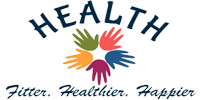








.jpg)
.jpg)


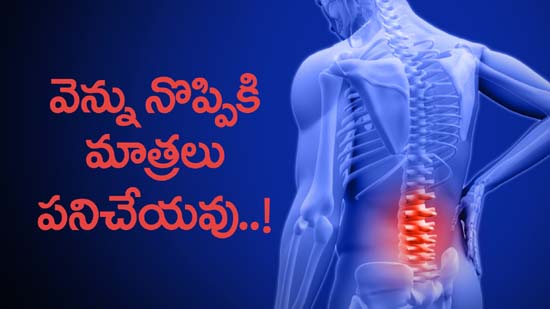
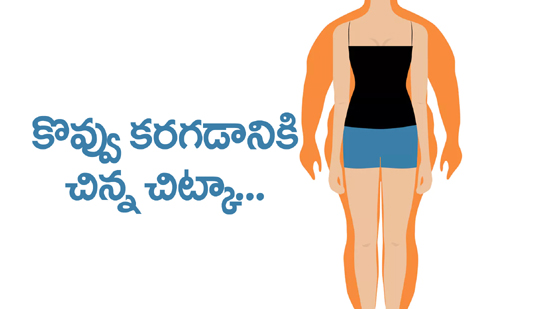



.jpg)
